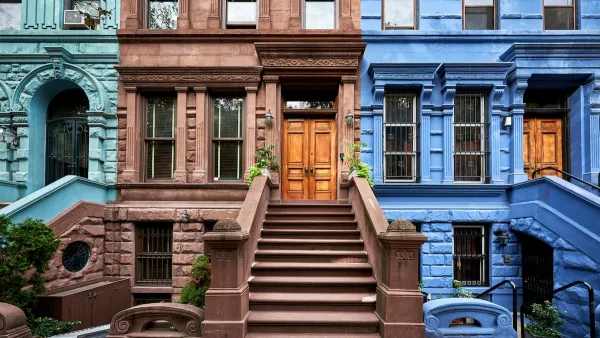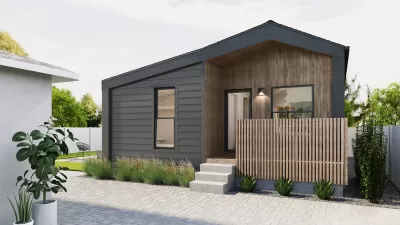The Washington Post examines "missing middle" housing as a solution for retaining millennials in cities and interior suburbs. There is still some question, however, about whether millennials are actually leaving urban areas.

"Cities and close-in suburbs looking to the future see a troubling trend: The millennials who rejuvenated their downtowns over the past decade are growing older and beginning to leave," writes Katharine Shaver.
The response of some cities to this perceived threat, according to Shaver, are "the kinds of homes that might be more familiar to millennials’ great-grandparents: duplexes, triplexes, bungalows, rowhouses with multiple units, and small buildings with four to six apartments or condos."
The article focuses specifically on the market case study provided by Washington, D.C., quoting Yolanda Cole, chair of the local chapter of the Urban Land Institute, and Art Rodgers, senior housing planner for the D.C. Office of Planning, among others. The article also touches on the experience of Nashville and Vancouver, British Columbia in experimenting with the missing middle.
As to whether millennials are actually fleeing more urban areas as the article assumes, "Fred Selden, planning director for Fairfax County in the Northern Virginia suburbs, said he hasn’t seen an exodus of millennials from the county’s more urban areas. But he senses the uncertainty in his profession."
FULL STORY: Cities turn to ‘missing middle’ housing to keep older millennials from leaving

Planetizen Federal Action Tracker
A weekly monitor of how Trump’s orders and actions are impacting planners and planning in America.

Congressman Proposes Bill to Rename DC Metro “Trump Train”
The Make Autorail Great Again Act would withhold federal funding to the system until the Washington Metropolitan Area Transit Authority (WMATA), rebrands as the Washington Metropolitan Authority for Greater Access (WMAGA).

The Simple Legislative Tool Transforming Vacant Downtowns
In California, Michigan and Georgia, an easy win is bringing dollars — and delight — back to city centers.

The States Losing Rural Delivery Rooms at an Alarming Pace
In some states, as few as 9% of rural hospitals still deliver babies. As a result, rising pre-term births, no adequate pre-term care and "harrowing" close calls are a growing reality.

The Small South Asian Republic Going all in on EVs
Thanks to one simple policy change less than five years ago, 65% of new cars in this Himalayan country are now electric.

DC Backpedals on Bike Lane Protection, Swaps Barriers for Paint
Citing aesthetic concerns, the city is removing the concrete barriers and flexposts that once separated Arizona Avenue cyclists from motor vehicles.
Urban Design for Planners 1: Software Tools
This six-course series explores essential urban design concepts using open source software and equips planners with the tools they need to participate fully in the urban design process.
Planning for Universal Design
Learn the tools for implementing Universal Design in planning regulations.
Smith Gee Studio
City of Charlotte
City of Camden Redevelopment Agency
City of Astoria
Transportation Research & Education Center (TREC) at Portland State University
US High Speed Rail Association
City of Camden Redevelopment Agency
Municipality of Princeton (NJ)





























